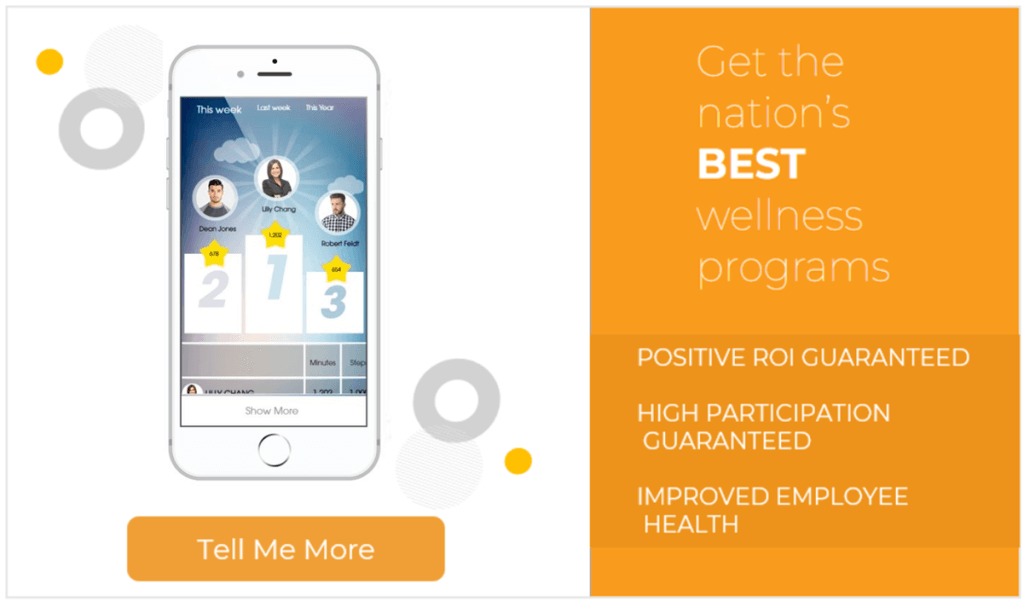In the last couple of years, there has been a mercurial shift in traditional working environments. The COVID-19 pandemic taught us how change is inevitable and why it’s acceptable to walk away from companies that aren’t willing to adapt. In light of that, this article talks about ways to promote high job satisfaction.
Employees no longer feel the need to remain in a role that doesn’t live up to or meet their expectations. The Great Resignation saw as many as 34.4 million people quitting their jobs in 2021. Their overall consensus is that they aren’t willing to compromise on second-rate roles that don’t offer employee job satisfaction.

Employees no longer feel the need to remain in a role that doesn’t live up to or meet their expectations.
So what exactly is job satisfaction? It’s when an employee feels happy, secure, motivated, and cared for on the job. Gone are the days when a high pay was the measure of success and worker satisfaction. Employees want more, and rightfully so.
Ways to Promote High Job Satisfaction in Your Workplace
The success of a company is nearly impossible to achieve without a strong, reliable workforce. Not taking care of employees’ needs can leave a dent in a company’s business goals, hamper progress, and disrupt operations.
Thus, employers need to take a step back to evaluate working conditions, management styles, and the lack of certain benefits. Increasing job satisfaction should be a top agenda for companies who want to improve their bottom line, lower absenteeism, attract top talent, and cut productivity losses.
In the succeeding sections, we shed light on 15 ways to promote high job satisfaction and reap the rewards of a happy, healthy workforce. You’ll pick up ideas on how to promote, support, and encourage a work environment that fuels work satisfaction.
RELATED: The Great Retention: Companies With High Employee Satisfaction
1. Listen And Acknowledge
Listening to what your employees have to say is a powerful show of respect, a way of acknowledging that you care about their sentiments, thoughts, and suggestions. It is one of the ways to promote high job satisfaction.
Also, employees don’t just want to be heard. For them, listening works hand-in-hand with effective, empathetic communication. Why respond with, “Yes, we’ll get back to you. Thanks for your time,” when you can say, “That’s given us plenty to think about and work on. Trust that we’ll get back to you by (a specific date).”
Make it a point to get back to employees personally about their concerns and expectations. It’s good practice to find a middle ground or workable solution to help make life at work better.
2. Provide Constructive Feedback
Instead of playing the blame game, encourage middle and top management to communicate constructive feedback to their respective teams regularly. This is best done in person or over a video call since tone and intention could be misconstrued in an email or letter.

Constructive feedback helps employees gain perspective about their strengths, weaknesses, and approach to tasks. It can positively improve their behavior, attitude, and willingness to learn or adapt to new processes.
Observations, relevant advice, and actionable solutions comprise constructive feedback and are opportunities to improve and perform better. Offering the support of seasoned mentors is a great way to help employees realize their potential and fine-tune areas that need improvement.
RELATED: How Wellness Programs Help Improve Employee Morale
3. Promote Personal Skill Development
Not everyone is born with ace personal skills. Discovering, expanding, and building these traits take time, patience, and energy. Allow your employees to learn how to:
- Solve problems
- Communicate effectively
- Take up initiatives
- Easily or quickly adapt to new situations
- Build self-confidence
Identify the personal skills an employee already possesses or wishes to work on, and then take it from there. Also, instead of forcing them to develop a long list of competencies, focus on those relevant to the job. This is one of the more important ways to promote high job satisfaction.
4. Develop Leaders
One of the many things that affect employee work satisfaction is a stagnant career. High-performing employees with the potential to handle more challenging responsibilities are often overlooked by the top management. This can happen for a variety of reasons:
- Those who project superficial leadership behavior grab and hold attention
- No regular performance tracking
- Unhealthy culture of favoritism
- Absence of mentorship and career growth programs
- Lack of employee promotion initiatives
- Cutting costs on new hires to maintain smaller teams with fewer growth opportunities

When employers fail to change the way they do business, they risk having an unstable workforce on their hands. It pays to foster an environment of opportunities by encouraging ambitious and deserving employees to move up the ladder. Over time, management will notice a significant improvement in employee satisfaction and performance, productivity, and presenteeism rates.
It pays to foster an environment of opportunities by encouraging ambitious and deserving employees to move up the ladder.
5. Offer Work From Home Or Hybrid Opportunities
Work flexibility is all the rage today after the COVID-19 pandemic forces us to question and rethink traditional work models. According to Buffer’s insightful survey, majority of employees affirmed that working remotely or partially from the office gave them more control over time management and personal schedules.
Proposing work-from-home or hybrid opportunities shows employees that you’re open to change and willing to go the distance.
Unsure if these options make sense for your company? The following points can help put things into perspective:
- For departments such as IT, consider offering rotational shifts. IT personnel can oversee and assist with tasks remotely through a digital setup. They could visit the office in alternate shifts to ensure uninterrupted business operations.
- Most in-office jobs can easily transition to a digital environment of video calls (like Zoom or Google Meet), instant messaging (Skype or Slack), and management software (Trello, Google Drive, or Microsoft Teams). Think of how much you’ll save on unnecessary, expensive resources to maintain full-fledged office space across different locations.
- A flexible work model allows employees to work better, smarter, and more efficiently from the comfort of home. Trusting employees to do their job well from practically anywhere fuels productivity, reduces burnout, improves performance, and fortifies their relationship with a company.
- Offering WFH opportunities widens your talent reach to score highly skilled candidates from various cities and countries. It’s a great way to diversify your workforce and foster an atmosphere of inclusivity and fresh work styles.
Ultimately, being open to flexible work models makes a company look good in the eyes of its employees, potential hires, and community.
RELATED: 6 Strategies for Successful Wellness with Remote Workers in 2023
6. Communicate Company Updates And Goals
Keep your employees in the loop by sharing important updates and business goals. After all, a company’s success is attributed to its workforce. Your wins, hopes, and dreams are as much theirs as they are yours. Choosing to work as a collective unit motivates employees to work with passion and purpose and stick around for longer.

Communicate through engaging mediums such as webinars, video calls, in-person meet-ups at a fun location, or social media. Maintaining a transparent, honest relationship with employees is likely to increase loyalty, trust, and job satisfaction in the workplace.
7. Provide A “Let-Loose” Place
Working in a rigid, lackluster environment can dampen a workplace’s atmosphere. Encourage employees to loosen up by taking frequent breaks, connecting with coworkers, and going for long lunches.
Moreover, they shouldn’t have to feel stuck or fearful of being themselves at work. Creating a coworking space where people can freely embrace their individuality and work at a comfortable yet productive pace can do plenty of good to their morale, performance, and self-esteem. This is one of the effective ways to promote high job satisfaction.
RELATED: The 10 Best Ways for Improving Employee Retention and Satisfaction
8. Do Trust, Don’t Nag Or Micromanage
Micromanaging and nagging employees are equally toxic management behaviors that need to end. It can be difficult, but not impossible, to change. First, acknowledge that these practices do more damage than good. Then, identify the signs and consciously work towards changing the way you conduct yourself and others.
Here’s how to identify micromanagers in the workplace:
- Unable to delegate tasks within a team
- Wants to be CC’d in all emails
- Gets too involved in the work of other employees
- Never satisfied with the work done by others
- Discourages independent decision-making
- Needs constant updates from employees
- Complains incessantly
- Doesn’t mentor or share knowledge with others
- Not open to suggestions or initiatives by others
What can you do about it?
- Understand the reasons why micromanagement is happening
- Learn to build trust with employees
- Ask for frequent feedback and take suggestions and advice seriously
- Adopt healthy boundaries
- Set realistic expectations
- Maintain an open, unbiased channel of communication
- Focus on your own roles and responsibilities
- Accept that it’s okay to fail and make mistakes
- Learn from your errors instead of intensifying a situation you can no longer control
- Let go of perfection and trust the process
- Delegate tasks
9. Host Team Building Activities And Celebrate Important Days
Team building sessions create lasting bonds and strengthen existing relationships between employees. They encourage participation and healthy competition in the office as well as boost job satisfaction and employee engagement.
Celebrating important days is a heartwarming tradition you can add to your wellness program, and you should go beyond employee birthdays.
Implementing a wellness program that includes team-building activities and challenges is a good starting point. Wellness programs are designed as a healthy mix of activities and personal goals (with trackable results) to help employees feel valued and good about working for an organization.

Companies are slowly realizing the depth and importance of having a solid wellness program in place. According to this survey, as many as 35% plan to spend more on wellness programs, with 43% thinking of investing in the same. It’s a well grounded initiative to foster and nurture a culture of good health, well-being, and teamwork.
Celebrating important days is a heartwarming tradition you can add to your wellness program, and you should go beyond employee birthdays. Milestones and major life events or wins are equally worth getting hyped about. It’s good practice to make employees feel they matter and their wins are yours, too.
Check out the table below for ideas:
| Team Building Activities | Important Days To Celebrate |
| Pottery or cooking classes | Expecting a baby |
| Office marathons, walkathons, or scavenger hunts | Work anniversaries and birthdays |
| Weekend boot camp | Promotion and career goal achievements |
| Vacations with the team | First home or first car |
| Weekly potlucks with a theme (vegan, vegetarian, by cuisine, etc.) | Wellness program accomplishments |
RELATED: 16 Staff Wellness Activities for Creating a Healthier Workplace in 2023
10. Clearly Define Growth Opportunities
Be upfront with new and potential candidates about the growth opportunities and strategies you have in place. That way, you won’t have to spend time, energy, and money on hiring candidates who change their minds and quit down the road.
When you define growth opportunities from the get-go, you’re letting individuals comfortably and realistically envision their career paths. This way ensures to promote high job satisfaction at work place.
11. Recognize And Reward Good Work
Achievements should never go unnoticed, rather celebrated and rewarded. Whether big or small, the scale of an accomplishment shouldn’t matter. It’s the effort that went into making it happen. Appreciate good work through:
- award ceremonies
- recognition certificates
- monthly newsletters
- cash rewards
- free event tickets
RELATED: 10 Employee Wellness Gifts to Incentivize Healthy Behavior in the Workplace
12. Be Less Strict On Dress Code
It’s time we encouraged employees to dress as they wish in an office and feel comfortable about their choices. When you set too many expectations, it makes you look controlling and indifferent to the needs of others. Instead of creating a manual of dos and don’ts, keep it crisp and clear with fewer restrictions.
For example, if you prefer a professional atmosphere, emphasize that employees can wear their choice of formal or semi-formal attire during the week, with one day open to casual wear.
13. Keep The Break Room Stocked
Employees should be encouraged to frequently step away from their desks to give their minds and bodies a break. A spacious break room is a great addition to an office but an unstocked one can be a major downer. Fully stock spaces of relaxation with healthy snacks and beverages.

Some people tend to forget to eat or drink water when deep in work. What better way to encourage better habits than by making refreshments accessible?
14. Create A Clean, Happy, Team Environment
Maintaining hygiene is crucial in a workplace, a fact that holds even more weight and relevance in light of the COVID-19 pandemic. Unclean work spaces foster an unhealthy environment of stress, anxiety, lack of interest, and demotivation.
A company’s values are reflected in the spaces they maintain for employees. By disregarding the importance of hygiene, you risk losing employees and negatively affecting job satisfaction.
RELATED: 7 Reasons Every Worksite Should Offer An Environmental Wellness Program
15. Extend Interesting Financial Incentives
A person is likely to run twice as hard at a race if there’s a reward waiting at the finish line. When you incentivize a goal, employees are more inclined to work harder.
For instance, a wellness program lets you create different attainable health milestones in and out of the office. Employees can be rewarded with things like:
- discounted gym memberships
- free health checkups
- extra paid vacation days
- cash prizes
The idea of investing in a successful wellness program is to help your people cope with everyday stressors and find a way to make life at work fun.
RELATED: How to Design Wellness Programs That Are Successful in 2023
Getting Started With Ways to Promote High Job Satisfaction
With these 15 ways to promote high job satisfaction, employers will be on their way to creating a workplace that is supportive, happy, and inspiring. It takes time and patience to formulate a solid plan of action to build job satisfaction among employees but trust us, it will all be worth it.
Not sure how to start? Sign up for a free demo with one of our team members and discover how you can have higher job satisfaction with your employees right away!
